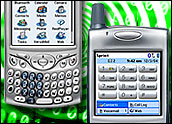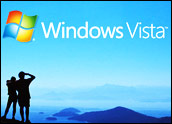
IBM is close to unveiling a new Internet browsing technology that will help the visually impaired enjoy streaming video and animation.
Code named “A-browser,” which stands for “Accessibility Browser,” the application uses and augments some of the technology found in IBM’s Easy Web Browser, the software used on sites — such as Macy’s.com — that helps the visually impaired navigate static Web sites by using audio to tell them what’s there, said Mike Azzi, spokesperson for IBM emerging technologies and global communications.
“‘A-browser’ is really an internal code name,” Azzi told TechNewsWorld. “It’s not been officially named yet. It’s an emerging technology.” He said the application is being developed in IBM’s Tokyo research laboratory.
Building on the Foundation
“Easy Web Browser is little different than ‘A-browser,'” he said. “It shares some of same the backbone, but Easy Web Browser really just allows the person to find what they’re looking for on a site. It kind of reads aloud to them. ‘A-browser’ is really for the visually impaired to see streaming video and animation specifically.”
One of the main problems facing visually impaired Web surfers, according to Azzi, is being able to interact with features on multimedia enhanced sites that activate audio and video.
“The visually impaired person cannot find the controls on the Web site to actually go ahead and click through to the video. This software helps them to locate the controls, to operate the video,” he said.
“It not only amplifies the sound but it also allows the user to control the video — to pause it, to slow it, or even speed it up if they want,” Azzi added. “Often, the soundtrack is all the visually impaired person has to rely on — so having it be clarified and having control of it, being able to slow it down so they can comprehend it, is something they need.”
Surfacing Technology
Although IBM has yet to formally announce the new product, it discussed it last week at a show in Cambridge, Mass., where the company has a user accessibility lab.
“We have this Made in IBM Labs initiative,” said Azzi. “We are consciously surfacing some of the most promising new emerging technologies from our global lab network, so there was a proactive showcasing of our technology.
There will be an increasing demand for technology to help the disabled as computer-savvy baby boomers advance in years, he predicted.
“There always were people with visual impairments, but the aging population of baby boomers is driving a large spike of people toward this need,” said Azzi. “As everyone grows older, a very large percentage of that group will need visual aid of this type.”
The “A-browser” will reportedly help visually impaired people access multimedia content through the use of keyboard shortcut keys rather than by moving an arrow with a mouse.
Bridging a Digital Divide
IBM reportedly said that the technology will be available sometime later this year and that it hopes to make it available for free as an open source product for mass distribution.
IBM has been working in the accessibility field for years, noted Judy Brewer, director of the Web Accessibility Initative at the World Wide Web Consortium. She hasn’t seen the “A-browser,” but remarked that the development of such products is important.
“For people with disabilities, it’s vital to have media players that facilitate their access to the increasing amount of multimedia on the Web,” Brewer told TechNewsWorld. “W3C engourages developers to follow its guidelines for the accessibility of Web sites, browsers, media players and authoring tools.”





















































